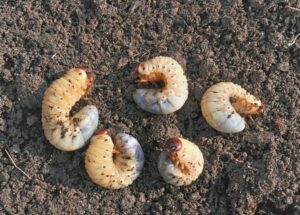Bindi, or bindii weed, is a sneaky intruder in your turf. It’s a low growing weed that blends easily with your grass, making it hard to spot and tricky to get rid of. The bindii plants spread primarily through their prickly seed pods, which can easily hitch a ride on foot traffic, pets, and even lawnmowers.
When these seeds find a spot in your lawn that’s not as lush or thick, they take root and flourish. If your lawn becomes too compact or if you mow your lawn too short, bindis will find it easier to penetrate and establish themselves. If you constantly have to deal with bindi outbreaks, it could be a sign that your lawn care habits need refining.
Identifying Bindi Weed
Before getting rid of bindis, you’ll need to know how to identify it. It’s recognizable by its rosette growth pattern and small yellow flowers on the ends. The weed is also known for its prickly seed pods that can be painful on bare feet.
Bindi prickles are not the only problem. A bindi weed invasion can quickly take over your lawn, pushing out your lush grass and replacing it with a sea of prickles. This weed prefers spring and summer for growth and will often go unnoticed until it’s spread by foot traffic across your lawn. Therefore, early identification and action are crucial.
Controlling Bindi Weeds
If you only have a small infestation of bindis, you might consider manual removal. You can use a garden fork to carefully extract the bindii plants from the lawn, ensuring you get the root to prevent regrowth. Manual control will be more effective early in the spring before the weed can seed.
Deal with a large outbreak by using a broadleaf weed herbicide. All Year Round Turf recommends weed killers that contain the active ingredients Clorpyralid, Diflufenican, and Potassium Salt. Remember always to follow the manufacturer’s instructions for the best results.
Keep Your Lawn Healthy
The best defense against bindi or bindii weed is a strong, healthy lawn. When your turf is lush and thick, bindis find it harder to take root and spread. Here are a few ways to keep your lawn in top shape:
Mowing: Maintain a higher mowing height to keep your lawn a little longer. This helps to shade the soil and prevent weed seed germination. Avoid scalping your lawn to prevent bindi invasion.
Watering: Deep, infrequent watering helps to establish strong roots and makes your lawn less susceptible to bindi growth.
Feeding: Regularly feeding your lawn with a high-quality fertilizer encourages lush growth so it can outcompete bindi weeds.
Remember, prevention is better than a cure and a lot less work when it comes to bindi weeds. By taking good care of your turf and dealing promptly with any bindi weed that does appear, you can enjoy a prickle-free lawn.




